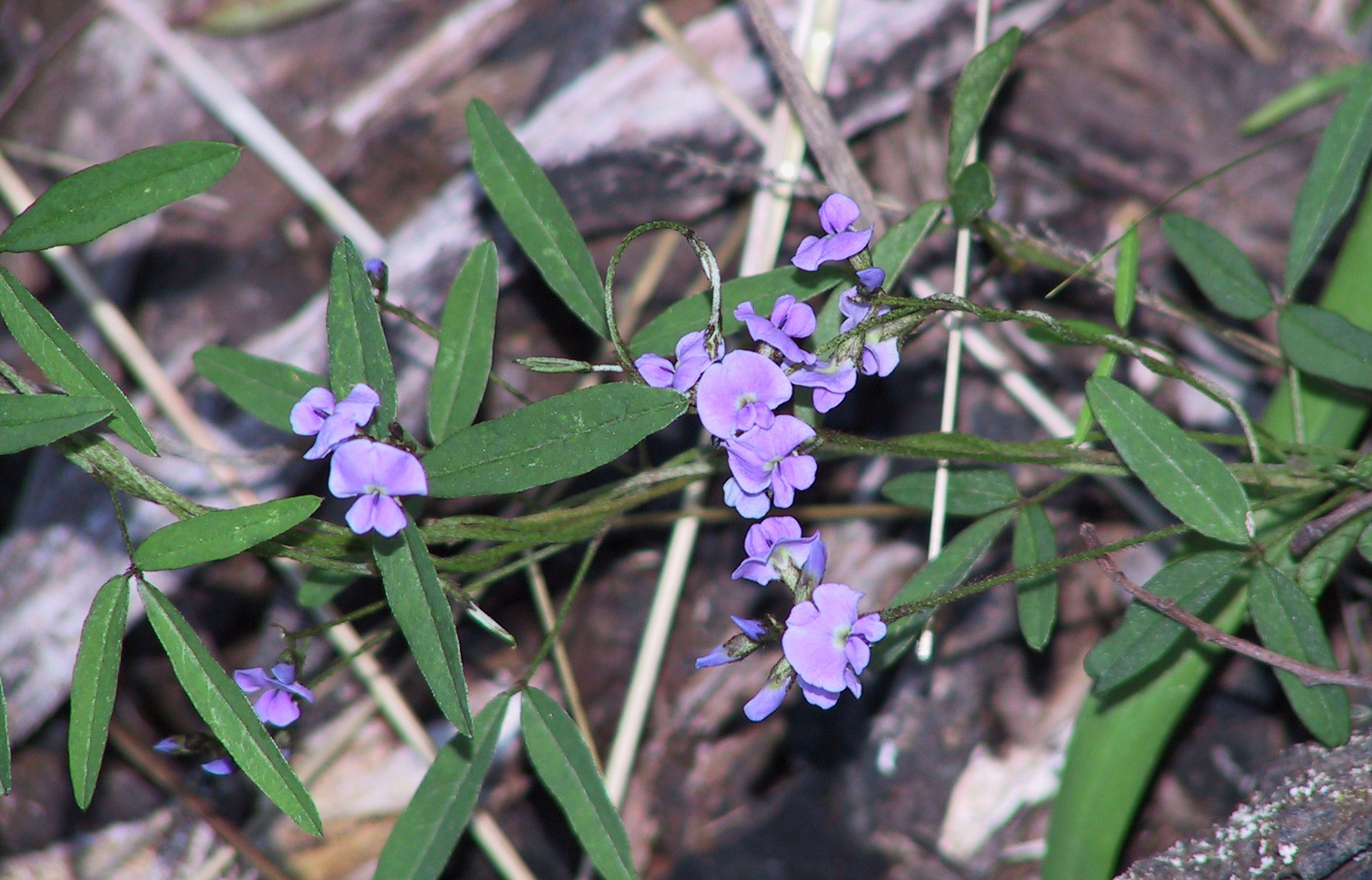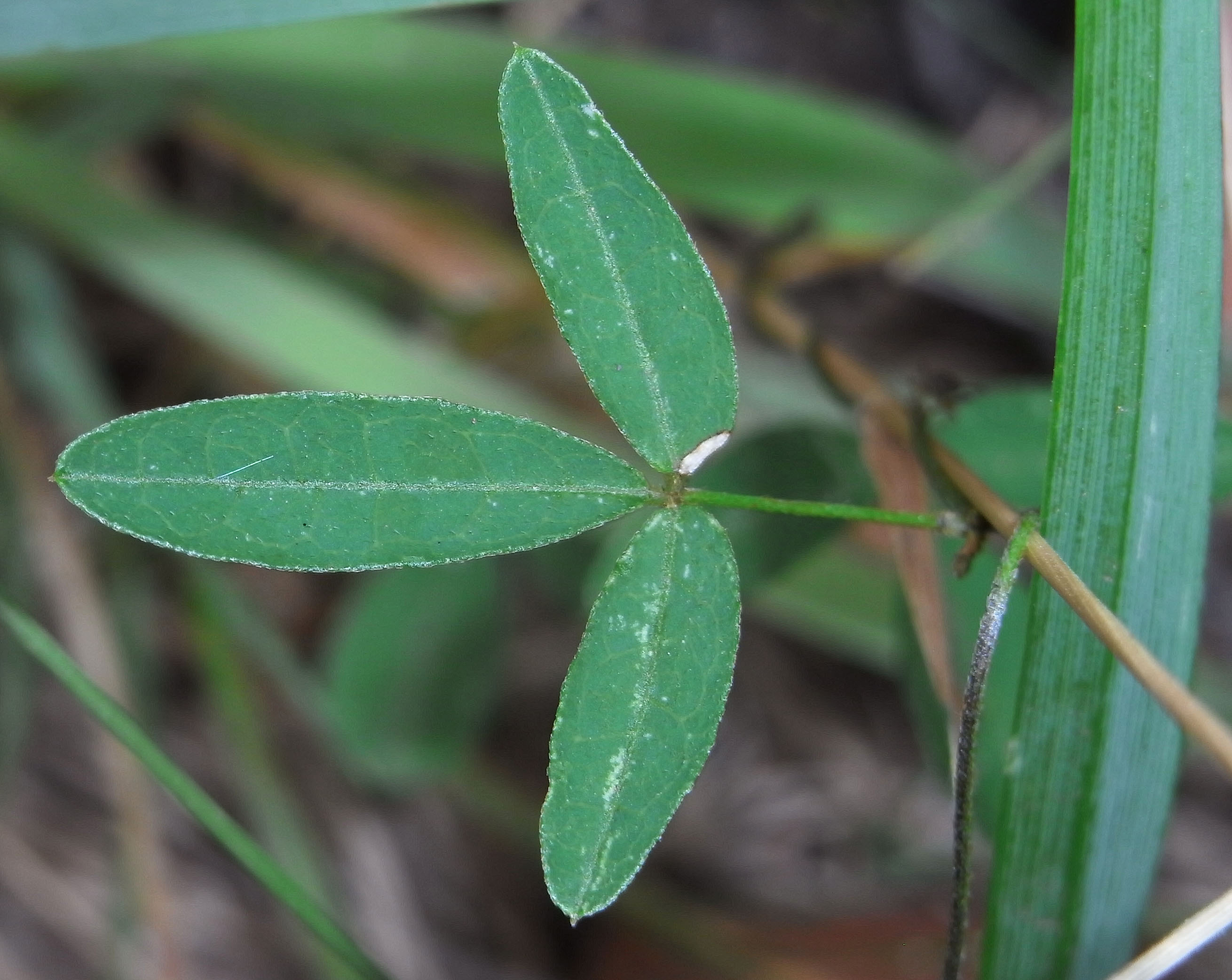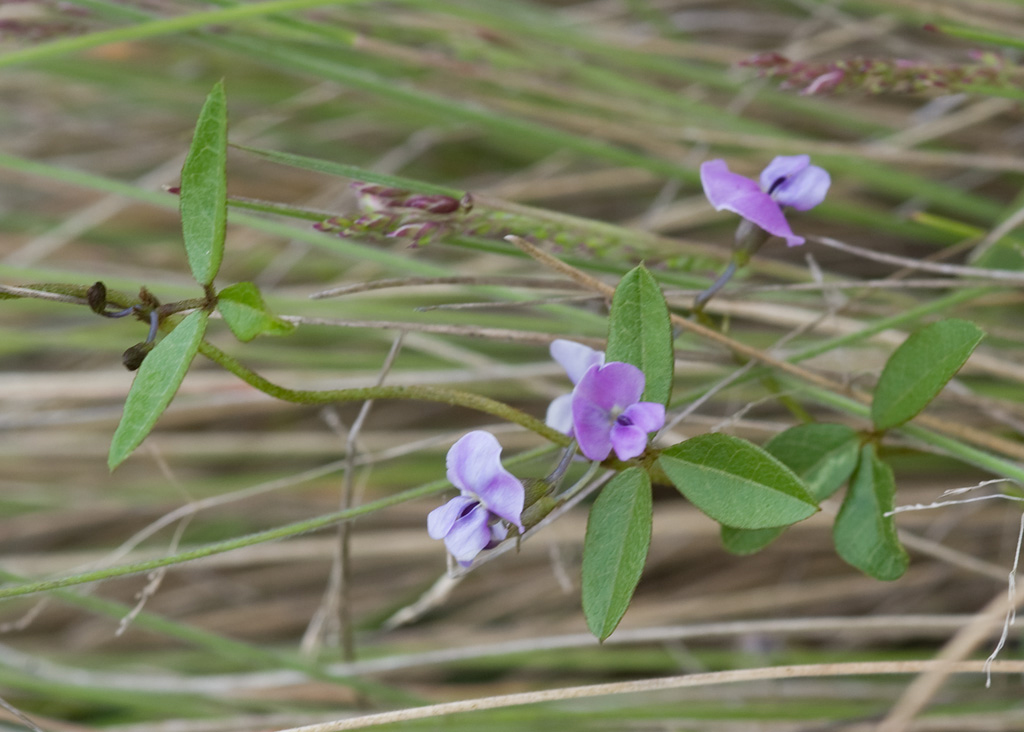


Twining Glycine
Glycine clandestina
Twining herb with long stems. Leaves variable in size and shape. Flowers are small pea flowers from pale pink through mauve to pale blue, held in small loose clusters near the upper leaves. Seed pods are 3-4 cm long, usually hairy and almost black at maturity.
| Details | |
|---|---|
| Flora Type | Scramblers, twiners |
| Distinctive Features | Long twining stems. Leaves narrow and long or lance-shaped. |
| Biology | Perennial. Has a woody rootstock but the stems are slender and delicate and susceptible to grazing. The flowers are a source of nectar and pollen for native insects, including bees and wasps, and the leaves are food for caterpillar species. |
| Native Status | Native |
| Flowering Time | all year, mainly in spring |
| Taxonomy | |
|---|---|
| Phylum | Tracheophyta (Vascular Plants) |
| Class | Magnoliopsida (Flowering Plants) |
| Order | Fabales |
| Family | Fabaceae |
| Genus | Glycine |
| Species | latrobeana |
The genus Glycine includes the soybean, a plant of major importance worldwide.
| Interesting Facts | |
|---|---|
| Similar Species | G. tabacina and G. clandestina look similar but the length of the leaflet stalks differs. In G. tabacina the middle leaflet has a longer stalk than the two either side. In G. clandestina, all three leaflet stalks are about the same length. |
| Native Status | Native |